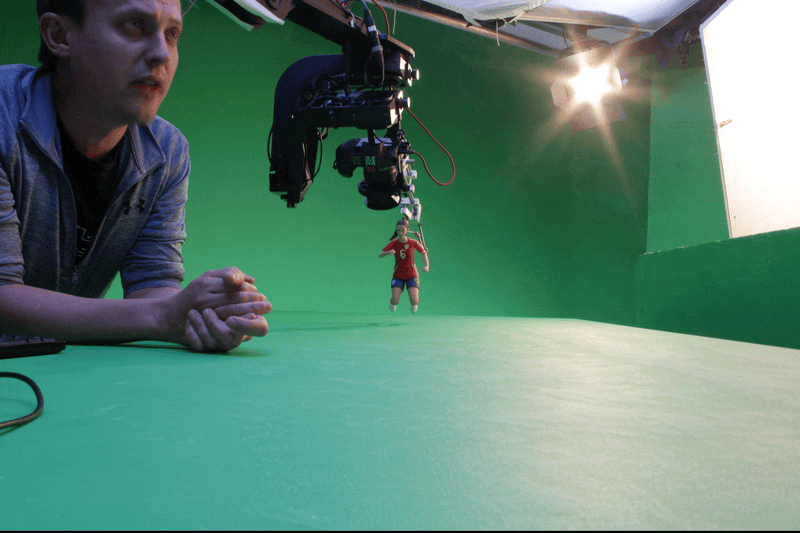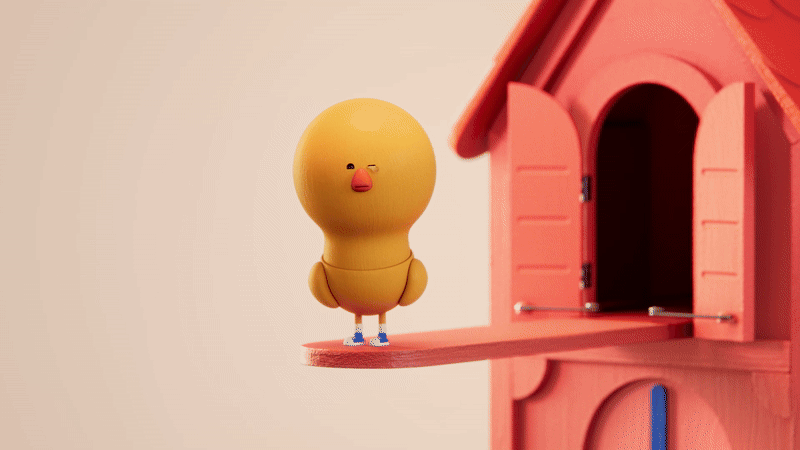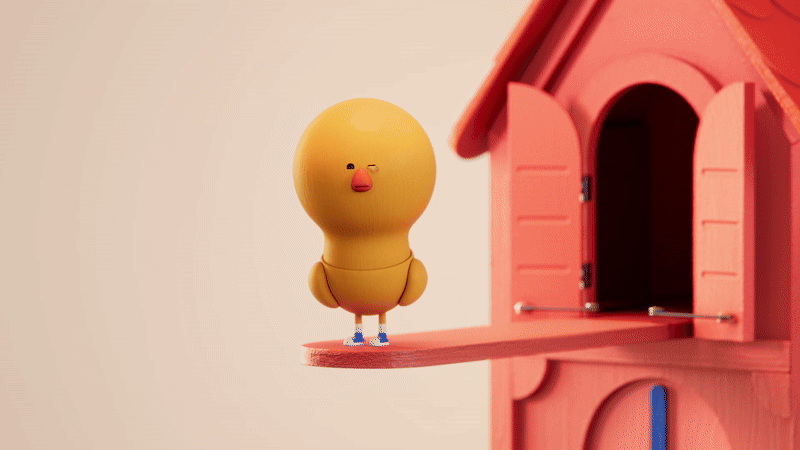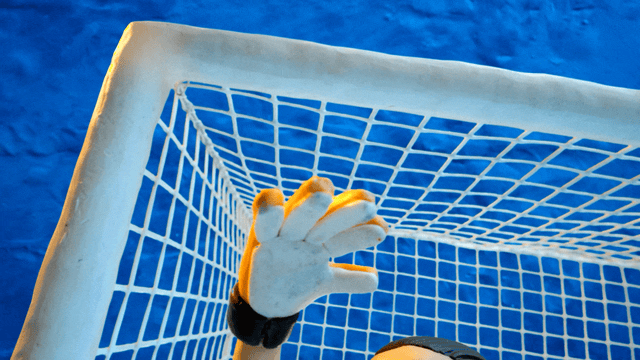How the BBC and Blinkink sculpted excitement for the UEFA Women’s Euro
Handmade down to the last thumbprint, the BBC’s UEFA Women’s Euro trailer brings football’s biggest stars to life in an intricate and action-packed claymation. We spoke to BLINKINK producer Rebecca Little about painstaking craft, uplifting tone, and why traditional techniques still score big in an increasingly digital world.
What was the initial brief from the BBC like, and how did you approach it? Was the use of stop motion always part of the plan?
The BBC came to us with a great script of ideas already in place along with a reference they liked of one of Nicos Livesey's previous jobs he did back in 2016, which was a Claymation music video for a band called Radkey. The campaign tagline Names Will Be Made seemed to fit well with the concept of the players being made physically from clay and a great way for it to stand out amongst the ever growing amount of AI content out there.
The schedule was 13 weeks long and we had about 90 people involved working across the BBC, BlinkInk and all of our crew who helped put the film together.
Credits
View on- Agency BBC Creative/London
- Production Company BLINKINK
- Director Nicos Livesey
-
-
Unlock full credits and more with a shots membership
Credits
View on- Agency BBC Creative/London
- Production Company BLINKINK
- Director Nicos Livesey
- Executive Producer Bart Yates
- Head of Production Alex Halley
- Editing Picture Shop/London
- Editor Mark Ferns
- Colorist Andi Haw Shuan Chu
- Color Producer Oliver Whitworth
- Sound Design 750mph
- Sound Designer Sam Ashwell
- Executive Creative Director Dave Monk
- Executive Creative Director Rasmus Smith Bech
- Head of Production James Wood
- Creative Director Jess Oudot
- Creative Director Matt Leach
- Creative Aron Sidhu
- Creative Steve Lownes
- Producer Jenny Broad
- Producer Rebecca Little
- Production Designer Gordon Allen
- DP Matthew Day
- VFX Supervisor Alasdair Brotherston
- Mix Lewis Clarke
Explore full credits, grab hi-res stills and more on shots Vault

Credits
powered by- Agency BBC Creative/London
- Production Company BLINKINK
- Director Nicos Livesey
- Executive Producer Bart Yates
- Head of Production Alex Halley
- Editing Picture Shop/London
- Editor Mark Ferns
- Colorist Andi Haw Shuan Chu
- Color Producer Oliver Whitworth
- Sound Design 750mph
- Sound Designer Sam Ashwell
- Executive Creative Director Dave Monk
- Executive Creative Director Rasmus Smith Bech
- Head of Production James Wood
- Creative Director Jess Oudot
- Creative Director Matt Leach
- Creative Aron Sidhu
- Creative Steve Lownes
- Producer Jenny Broad
- Producer Rebecca Little
- Production Designer Gordon Allen
- DP Matthew Day
- VFX Supervisor Alasdair Brotherston
- Mix Lewis Clarke
Can you walk us through the creative process of working with traditional Claymation?
The schedule was 13 weeks long and we had about 90 people involved working across the BBC, Blinkink and all of our crew who helped put the film together.
If their expressions needed to change it took hours for the sculptors to physically sculpt in the new expressions on their faces.
The first step of the process was to put together a storyboard. Nicos worked closely with one of our in-house animators Reg Issac and storyboard artist Joe Totti to work out the best way to bring the script to life. The next challenge was creating an animatic to work out how we would fit everything into a 40 second film, and still have time to register all of the players and their names!
Alongside this, we had a team of sculptors working to bring images of the chosen players to life in puppet form, as well as creating concepts of the different scenes so that the art director and his team could have a style guide to work from when creating the clay sets.

For two of the key scenes (Bonmati and Miedema) we also created a 3D previz. This was so we could use the data to speed up the programming of the motion control rigs as the camera moves were so complicated they would have taken days to program without it! Nicos also wanted to capture a real life reference for the Bonmati scene to make sure the football moves looked realistic, so we called in the football choreographer Mike Delaney to help us put together a team of players and choreograph the football moves.
With all the concerns brewing around Generative AI and its impact on creativity and culture, I think that audiences are drawn to stories told in undeniably hand-crafted mediums like this too.
The shoot took two and a half weeks to animate with a team of 5 stop motion animators working simultaneously. Shooting with clay is notoriously slow as every time an animator moves one of the puppets to set the new frame the clay pulls apart in the joints and needs to be smoothed down between each shot. The players' faces were also incredibly tiny, so if their expressions needed to change it took hours for the sculptors to physically sculpt in the new expressions on their faces.
All of the players and sets had to be shot separately due to the scale of the stadium sets (otherwise we would have had to have a very large studio and sets!) so the compositing team had a big job putting everything together after the shoot.

Claymation is notoriously labor-intensive; why do you think this style was chosen for the campaign?
Animation is always a great storytelling medium for ideas like this, where you need to include star talent and present them in larger than life way. With so many big international sport-stars involved it’s pretty much impossible to film them all, so animation becomes a great solution on a practical level too. When we’re devising an animation style we’re always pushing for something fresh and distinctive that will stand out from everything else out there, and claymation is just so so good, but so underutilised.
When you can see the thumb prints in the clay you get that sense of the human endeavour and ingenuity involved.
With all the concerns brewing around Generative AI and its impact on creativity and culture, I think that audiences are drawn to stories told in undeniably hand-crafted mediums like this too.

What does it bring that other forms of animation might not?
There's a dose of nostalgia for sure. For people who grew up watching old MTV idents and Celebrity DeathMatch, it instantly takes you to that awesomely warm and familiar place.
It’s also pure magic, seeing inanimate objects come to life before your eyes like this. When you can see the thumb prints in the clay you get that sense of the human endeavour and ingenuity involved.
So many women’s sports films are so earnest, while the men’s ads get to have all the fun!
Women’s football is often portrayed in a more emotive, narrative-driven style. Why was it important to make this spot feel fun, playful, and vibrant?
That was something we really loved about this brief in the first place. So many women’s sports films are so earnest, while the men’s ads get to have all the fun!
So much of the strategy from the team at BBC creative was about making this shift in tone and direction, which allowed us to push so many wild details into the film.

There are lots of clever visual metaphors used for each character; can you talk us through those creative decisions?
Steve and Aron who wrote the script had done a fantastic job of mapping out a lot of the visual metaphors conceptually in their first draft of the script. Inevitably, there was some negotiation required on how many players we could include within the film before it became too hectic, and then making sure we had good representation of the different nations and players, so it was a big old puzzle to figure out, but feels like we managed to find a good balance in the end.
The standout moment was seeing the Viveanne Miedema shot come to life as this one was by far the most time consuming and challenging shot to achieve.
What were the highlights and challenges?
The standout moment was seeing the Viveanne Miedema shot come to life as this one was by far the most time consuming and challenging shot to achieve. This was due to the crazily complex camera move and needing to have the very detailed puppet grow out from the ball of clay. This shot took almost 4 days to shoot on its own!
The most challenging part of the process was definitely the shoot and trying to capture so many claymation shots with very detailed puppets and incredibly complicated camera moves in a short space of time. We had a team of some of the best stop motion crew in the business working with us to make sure we could get through everything as quickly as humanly possible!

)






